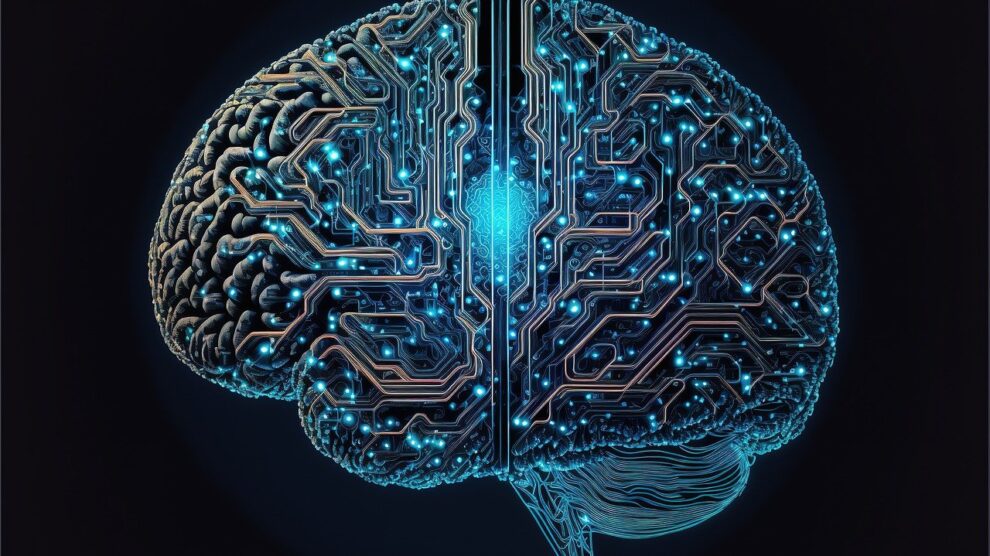Artificial intelligence flourishes through the seamless interplay of software and hardware components. Algorithms serve as the brains powering these systems, while hardware supplies the energy and framework to make them functional. Their bond is intricate and intertwined; without hardware support, even sophisticated algorithms would exist merely as concepts without a tangible, real-world impact.
While AI relies heavily on algorithms to process information and make decisions based on patterns they detect in the data they analyze, these algorithms need computational power to operate at their best capacity. This is where hardware steps in as the powerhouse supporting their effective and efficient function, primarily through specialized hardware like GPUs and TPUs for smooth AI computations. These specialized hardware units are created to manage the calculations needed to identify images and train models for machine learning using natural language processing techniques.
Hardware acceleration as a key enabler
GPUs and TPUs are designed to manage intelligence processing needs. Unlike processing units (CPUs) that handle operations sequentially, GPUs and TPUs can handle multiple tasks concurrently. This is crucial for AI applications requiring fast calculations, like self-driving cars that need to analyze real-time data from cameras and sensors for quick decision-making. Achieving this would be impossible without the performance of hardware.
Using hardware acceleration isn’t just about speed. It’s also about efficiency. AI algorithms can be quite demanding in terms of resources, as can their energy consumption levels. High-performance hardware can help lessen these demands by optimizing processing tasks to reduce energy usage and latency delays. All this makes it feasible to implement AI in places with resources like smartphones and IoT devices at the edge.
Data storage and processing are the backbone of AI
Every AI algorithm is built upon a sea of data, which it relies on to understand and make forecasts efficiently as it evolves with time and experience. Teaching an AI model effectively entails providing it with data sets that can vary in size from terabytes to petabytes, yet storing and handling massive amounts of data poses a significant challenge that hardware needs to meet head-on.
Cutting-edge storage solutions paired with processors empower AI systems to retrieve and process information with precision swiftly. For example, SSDs deliver access to data, while sophisticated data centers accommodate the resources for extensive computational tasks. Cloud computing services leverage specialized hardware to provide options for AI advancements. These innovations empower scientists and engineers to refine models without relying on hardware, making AI capabilities more accessible.
Effectively handling volumes of data also demands memory systems. The hardware needs to guarantee that the algorithms can swiftly access and utilize data for both training and inference purposes. Any delays in data retrieval can significantly impact the efficiency of AI processes; hence, the need for integration with hardware is crucial.
Integrating sensors with AI for decision-making
The connection between AI and hardware goes further than processors and storage devices; AI programs frequently rely on information from sensors to make choices with these sensors, varying from cameras and microphones to IoT gadgets that monitor environmental conditions such as temperature and humidity.
In settings like homes or healthcare gadgets, AI systems examine data from sensors to deliver information or initiate operations. For instance, while a smart thermostat regulates the temperature according to occupancy and external weather conditions, the AI algorithms powering this feature depend on accurate, up-to-the-minute sensor data to operate efficiently. The hardware guarantees that these sensors stay precise and prompt in delivering a data flow for evaluation.
In cases where AI tasks demand responses, sensors play a role in ensuring efficient operations and safety measures are met at all times. Autonomous vehicles heavily depend on the data collected from sensors to navigate securely in their surroundings, and medical devices such as monitors rely on AI to recognize abnormalities in a person’s vital signs. These technologies require hardware to swiftly gather and analyze sensor data to provide reliable information for timely decision-making by the AI algorithms.
The impact of real-time applications and the role of hardware
Real-time AI technology strains hardware’s capabilities to the maximum level needed for tasks like powering autonomous vehicles. Effortlessly processing data volumes within milliseconds is a must for functions such as analyzing camera visuals, decoding radar and lidar signals, and forecasting the movements of vehicles or pedestrians nearby. Top-notch hardware guarantees swift data processing, allowing instant responses from the vehicle.
Medical equipment also relies on processing capabilities for operation. AI-driven diagnostic instruments need to precisely evaluate information to aid healthcare professionals, so any processing delays may result in mistakes, underscoring the role of dependable hardware.
The relationship between AI and hardware becomes particularly noticeable in edge computing situations where devices such as drones or robots function in environments with access to cloud computing resources. These devices depend on data processing by their onboard hardware to operate without depending on external servers. Incorporating processors and accelerators into edge devices can provide real-time AI capabilities in resource-limited environments.
Building a connection between software and hardware for a smooth transition into the future
Collaboration between AI algorithms and hardware is constantly advancing. Because complex algorithms require hardware, improvements in hardware support the progress of AI capabilities. This reciprocal growth cycle pushes the limits of what AI can achieve.
Advancements in AI technology are leading to an increased need for customized hardware solutions as they evolve to more sophisticated levels. Breakthroughs in quantum computing and neuromorphic processors, among other state-of-the-art technologies, hold the potential to transform the landscape of AI hardware significantly. These advancements may facilitate the creation of robust AI systems that can tackle challenges previously deemed impossible to overcome.
AI researchers and developers must consider the constraints of hardware while creating algorithms. The key is to strike a balance between efficiency and precision to guarantee that AI systems are feasible and adaptable. Collaboration between software and hardware specialists is crucial for crafting systems that optimize the strengths of both sides.
The dynamic interaction of AI algorithms and hardware goes beyond technicalities — it forms the bedrock of innovation and advancement in technology by fostering systems that are both effective and efficient. This collaboration is set to redefine the landscape of AI and push the boundaries of technological capabilities further.





